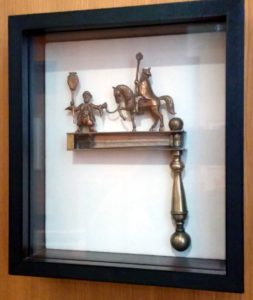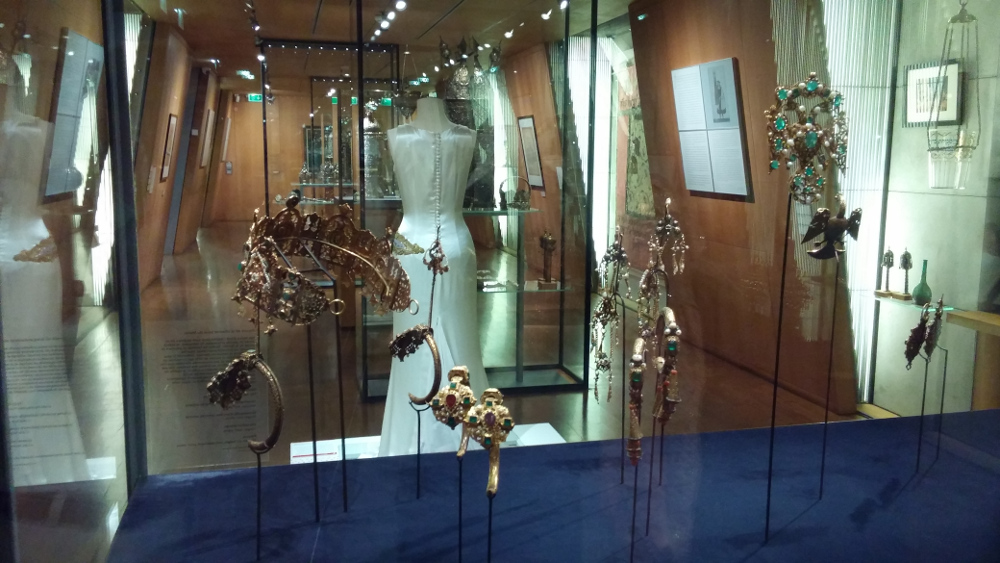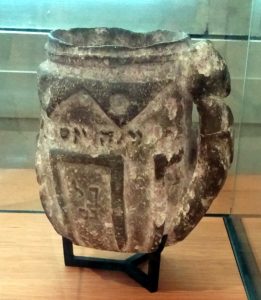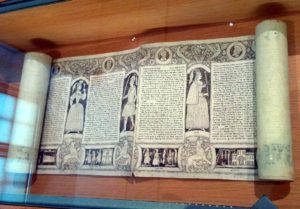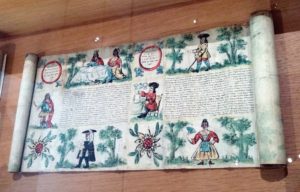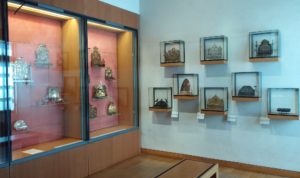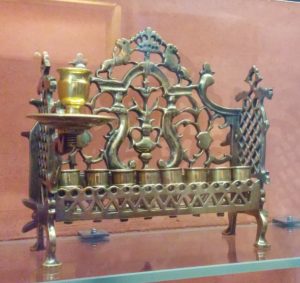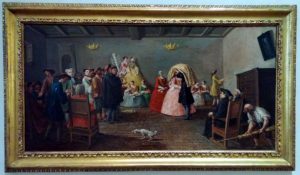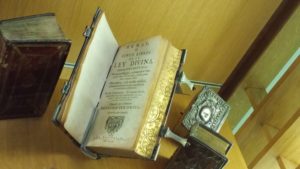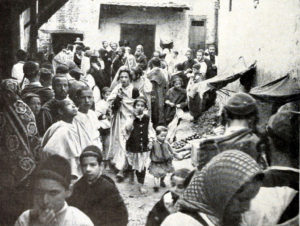
In 1890s Morocco, Jews in Fez were concentrated in the city’s crowded walled ghetto, the Mellah. (Click photos to enlarge.)
Today’s “guest blogger” from the past is Burton Holmes (1870–1958), the noted American traveler, lecturer and photographer who coined the term “travelogue.”
His first published travelogue includes about 20 photos of the Jewish ghetto in Fez from his 1894 trip to Morocco. By modern standards, his narration often lacks cultural sensitivity, and I do wish he had chosen a broader range of subjects. Even so, the pictures are worth a look. Here are some of them, along with bits of his narrative.
From the book Burton Holmes Travelogues
with Illustrations from Photographs by the Author, vol. 1
(1919 edition)
The next day we devote to the Jewish quarter, a distinct and separate city, called the “Mellah.”
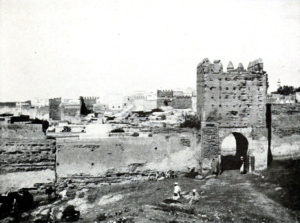
The “Mellah” or “ghetto” of Fez.
We approach it through the Hebrews’ burial ground, a place of whited sepulchers, dwellings for the dead, and dingy huts, temporary abodes for living men and women; for there are two populations in the Jewish cemetery, a fixed population of the wealthy dead, a passing population of the living poor. You must remember that in these Moorish cities the Jews are still compelled to dwell apart [from Muslims]… Their houses are confined in the restricted Mellah, where no provision was originally made for an increase of population. Therefore the poorer and the weaker Jews have been squeezed out of its gates and have found refuge here in the city of the dead, where they have built crude huts and begin life anew…
The right to build these shelters in the cemetery was granted by the Sultan to the poor, when the overcrowding of the Mellah proper became a menace to public health…
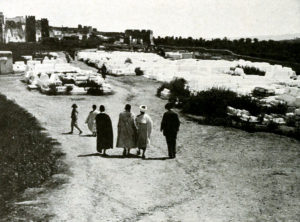
The Jewish cemetery, a “place of whited sepulchers…”
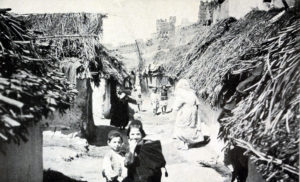
“…and dingy huts.”
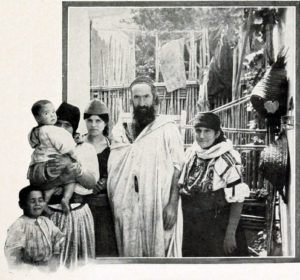
Poor neighbors of the wealthy dead.
Continue reading →
